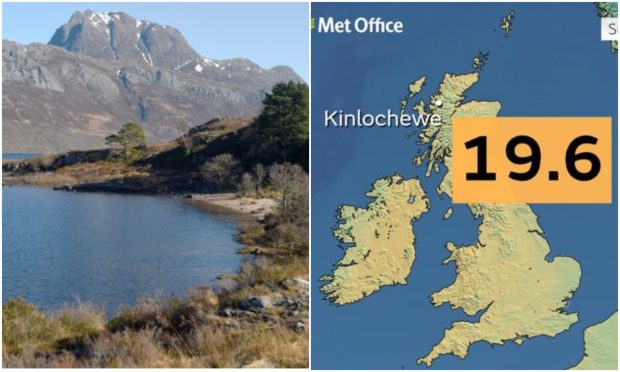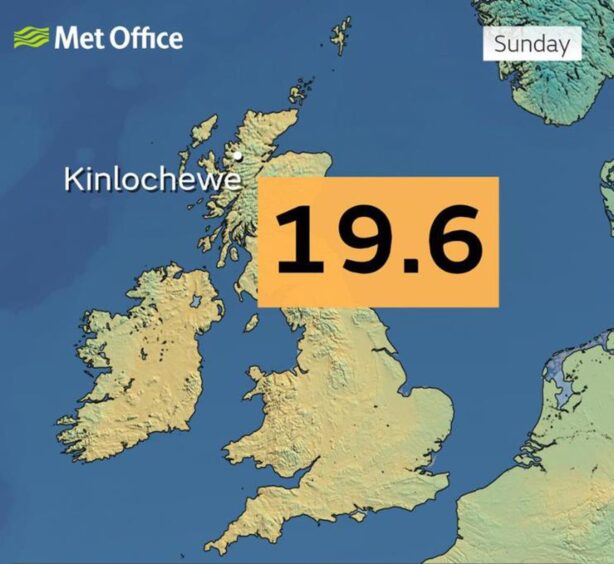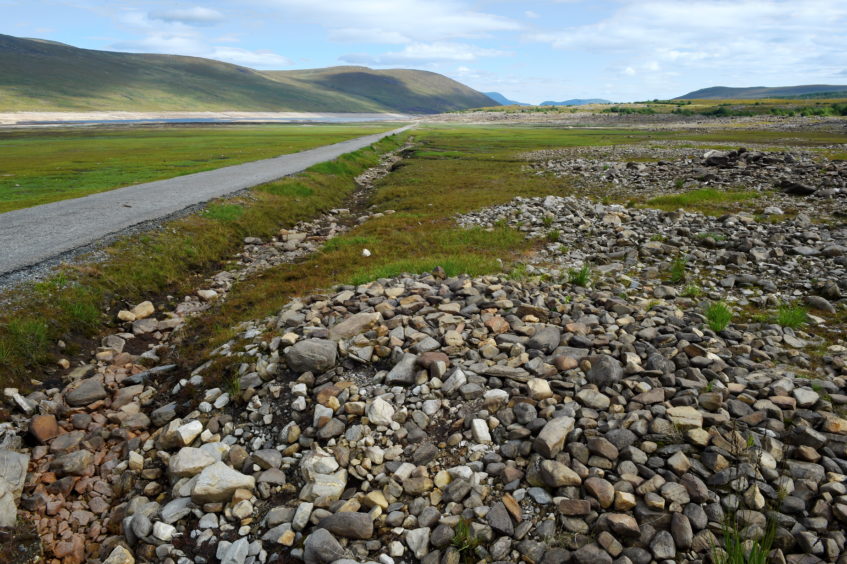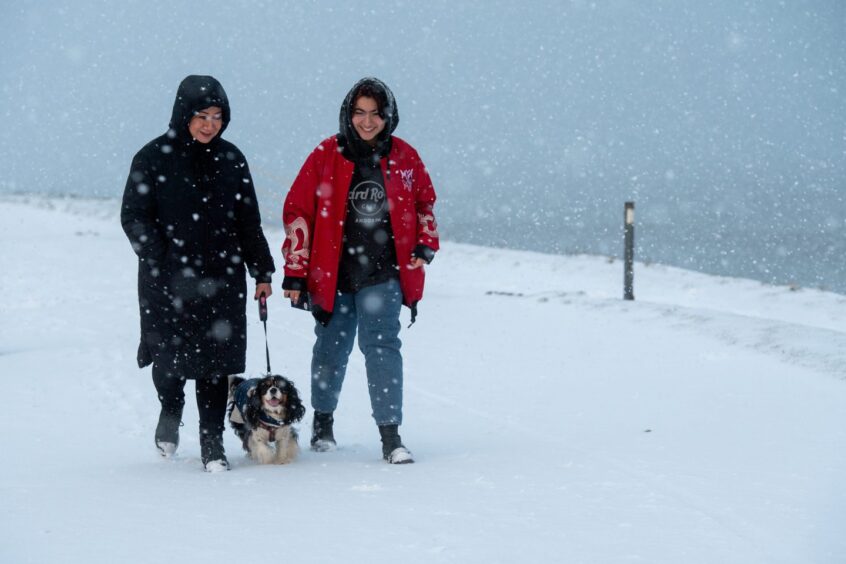Kinlochewe in the western Highlands has broken the UK record for the highest-ever January temperature, after reaching 19.6C today.
The Wester Ross village beat the 21-year record that was set at Aboyne and Inchmarlo in Aberdeenshire back in 2003, when the temperatures reached 18.3C.
A spokesman for the Met Office told The P&J: “it’s a record for Scotland and the UK as a whole”.
He added: “It was widely across north-west Scotland.”
Other temperatures in the northwestern Highlands also reached high temperatures, with Achnagart reaching 17.5C and Loch Glasscarnoch hitting 17.4C.
“We thought that 15 to 17 degrees was possible, but we didn’t expect it to go quite that high,” the spokesman added.
Why was it so hot in January?
He said that the unseasonably high temperatures were due to the foehn effect.
This is described as being “a change from wet and cold conditions on one side of a mountain, to warmer and drier conditions on the other (leeward) side.”
The weather expert added: “We’ve got southerly winds at the moment and they’re going up over the highest ground for the mountains and then as the air comes down the other side of the mountains, air becomes warmer.
“So you get this sort of effect where temperatures to the leeward of high ground, so in this case the northern side of the mountains can become much warmer than the surrounding air.
“It has been mild southerly air anyway, so temperatures at sort of 12, 13, 14 degrees, but the foehn effects added into it pushes them up to sort of close to 20C.”
This is a far cry from two weeks ago when the north and north-east were hit by snow and below-freezing temperatures, which caused much disruption across the region.
Unseasonably high temperatures ‘short lived’
However, the spokesman said that the unseasonably high temperatures would be “short lived”.
He added: “Temperatures will come back down again over the next few days, with frost returning tonight, so it’s sort of a one-day type event.”
Tomorrow is much chillier, with a top temperature of 5C in Aberdeen and 6C in Inverness.



